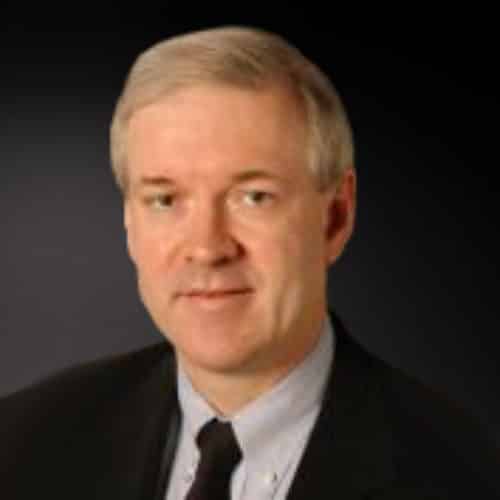Remarks by Joseph Seidel, Chief Operating Officer for SIFMA, as prepared for delivery at SIFMA’s Equity Market Structure Roundtable.
Good morning. My name is Joe Seidel and I am the Chief Operating Officer of SIFMA. On behalf of SIFMA, I’d like to thank you all for joining us today.

Before we begin, I would like to thank Goodwin Procter and especially Nick Losurdo for hosting us today. I would also like to thank Sapna Patel, Head of Americas Market Structure & Liquidity Strategy at Morgan Stanley, and Chair of SIFMA’s Equity Committee, and Mark Campbell, Head of New Business, Fidelity’s Center for Applied Technology and Vice Chair of our Equity Committee for their leadership in developing this program. Finally, I would thank our moderators, Craig Lewis, Elad Roisman, Nick Losurdo and Charlie Sommers, and all our panelists for participating.
Review of U.S. equity market structure and specifically Reg NMS has been a SIFMA priority for many years. In fact, we have published at least three white papers on the topics over the last decade. Last June, Chair Gensler suggested several ideas for equity market structure reform. At the time, we noted our support for many of Chair Gensler’s ideas, including updating SEC Rule 605, related to data disclosure enhancements for all market participants including exchanges, market centers and brokers. However, we also expressed our concerns that some of the other suggested changes could impact investors’ costs by eliminating low or zero-dollar commissions or limiting order execution venues and noted these changes should be reviewed closely and subject to robust cost-benefit analysis.
Fast forward to December 14, 2022, when the SEC put out for comment their package of four proposals, and to three weeks ago, when SIFMA filed its comments with the Commission. We remain steadfast in our support of updating Rule 605 and, in fact, believe the SEC should adopt the proposed changes to the rule. In the SIFMA view, this would provide better baseline data for the SEC and stakeholders to consider what, if any, structural changes may be necessary.
We believe an expanded Rule 605 should be the foundation of any further rulemaking the Commission contemplates regarding equity market structure and, once implemented, the Commission will have the data it needs to fully assess market quality and consider whether additional rulemaking is needed and how any such rulemaking should be designed.
SIFMA has concerns related to the other proposed rulemakings, particularly around how they interact with one another and to the extent that all four of them could be adopted or implemented either at or around the same time. SIFMA commissioned a study included with our comments (see Appendix E) which demonstrates that the cumulative effects of the proposals may overstate their purported benefits and may understate their costs. Like many commentators, we are focused on the consequential changes the proposals would bring to well-functioning markets, without any case of market failure driving such a sweeping re-alignment.
Last fall we felt potential revisions to equity market structure warranted an open-ended discussion of key topics among all market participants, and that is why we hosted our first roundtable in September. Now that the proposals are out and the comment period has closed, we think it remains crucial to pull all impacted voices together to talk about the proposed dramatic restructuring. The purpose of today’s event is to hear views on these and other topics from a representative sample of all stakeholders: investors; exchanges; dealers; and market observers; and hopefully provide useful food for thought as policymakers determine what, if any, changes to make to market rules. By design, we have attempted to assemble a broad sample of participants so that the discussion we have today will be anything but monolithic.
As a starting point on this issue, we at SIFMA believe that our equity markets are incredibly efficient and resilient and investors, especially retail investors, have the greatest ease of access and lowest cost of trading in history. Further, the marketplace is intensely competitive both upstream and downstream, and again particularly with respect to retail investors. And, of course, the marketplace is among the most regulated sectors in our economy.
And with that, it is my great pleasure to introduce our first two speakers.
Craig Lewis is the Madison S. Wigginton Professor of Finance at Vanderbilt University and was the Chief Economist and Director of the SEC’s Division of Economic and Risk Analysis under Chair Mary Schapiro. During his three years at the SEC, Professor Lewis led efforts to bolster the role of economic analysis in the financial regulatory process, particularly with implementation of the landmark Dodd-Frank financial reform law.
Craig will lead today’s discussion with Jessica Wachter, Chief Economist and Director of the Division of Economic and Risk Analysis at the SEC. In this role, she oversees economists, data scientists, and other professionals who provide economic analysis and data analytics in support of the SEC’s mission.
Dr. Wachter joined the SEC from the Wharton School, University of Pennsylvania where she was the Dr. Bruce I. Jacobs Chair of Quantitative Finance and a Research Associate with the National Bureau of Economic Research. Prior to Wharton, Dr. Wachter taught at New York University’s Stern School of Business. She previously served on the boards of the American Finance Association and the Western Finance Association and as associate editor of the academic publications Review of Financial Studies and Journal of Economic Theory. Dr. Wachter graduated with an A.B. in Mathematics magna cum laude and a Ph.D. in Business Economics from Harvard University. Her research focuses on behavioral finance, capital markets, and financial crises.
Please join me in welcoming Craig Lewis and Jessica Wachter and I will turn it over to them. Thank you.
Joe Seidel is Chief Operating Officer of SIFMA. He manages the day-to-day operations of the Association, including core legal, regulatory, business practices, public policy and communications activities.
Source: SIFMA




